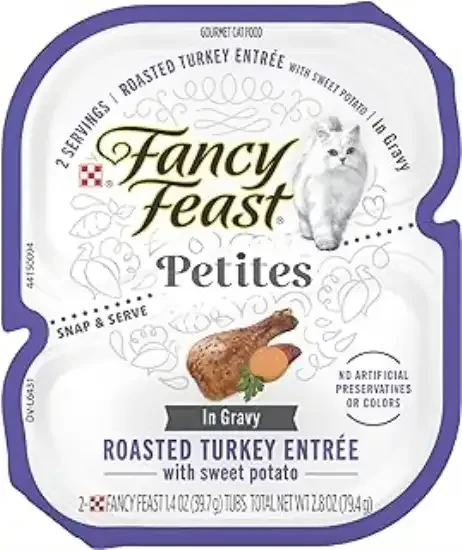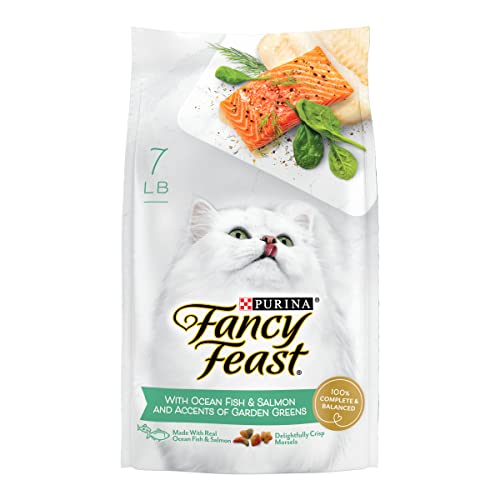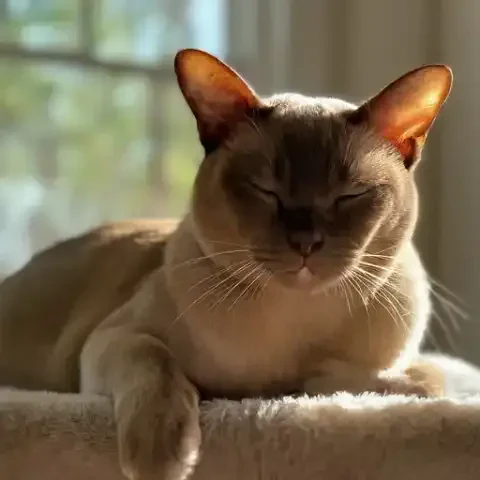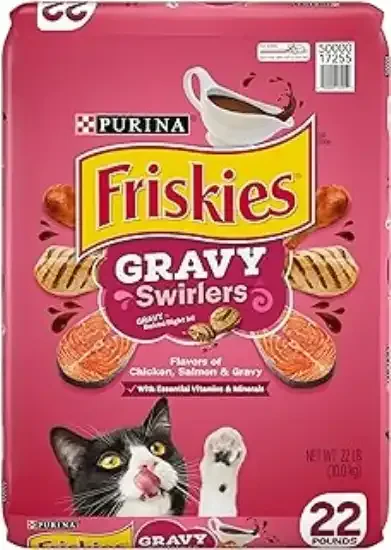Imagine your cat: a sleek, miniature panther, bursting with playful energy, their coat gleaming like polished obsidian, their purr a contented rumble that fills your home. This picture of vibrant feline health, this essence of cat-ness, begins not in the sunbeams they love to bask in, or the playful pounces and chases they engage in, but from within. It stems from the very foundation of their well-being: their nutrition. Think of food not just as fuel to keep them going, but as the very building blocks of their health, the medicine that proactively safeguards their vitality and longevity. As a cat owner, you hold immense power in your hands – the power to significantly influence your cat's health and happiness through the dietary choices you make. It's not just about filling their bowl; it's about crafting a foundation for a lifetime of purrs, playful antics, and the unwavering companionship that only a healthy, well-nourished cat can offer. This journey into feline nutrition isn't about complicated science or restrictive diets; it's about gaining a clear understanding of what your cat truly needs to thrive, and empowering you to confidently navigate the pet food aisle and make informed decisions that will keep your feline friend healthy and happy for years to come.
To truly understand how to nourish your cat optimally, we need to delve into the specifics of the feline diet. What are the essential nutrients that are non-negotiable for their health and well-being? Let's begin with the cornerstone of the feline diet: protein. Protein isn't just important for cats; it’s essential. Cats are obligate carnivores, a term that might sound a bit dramatic, but simply means they are biologically wired to thrive on a diet primarily derived from animal sources. Unlike omnivores or herbivores, cats have unique metabolic requirements that necessitate animal-based protein to obtain specific essential amino acids, most notably Taurine. They cannot efficiently synthesize these crucial amino acids from plant sources; they must get them from eating meat. Protein serves a multitude of vital functions in a cat's body. It's the fundamental building block for muscles, enabling them to leap, climb, and chase with their characteristic agility. It's crucial for tissue repair, helping their bodies heal and regenerate. Proteins are also essential for the production of enzymes, which drive countless biochemical reactions in their bodies, and for supporting a robust immune system, protecting them from illness and infection. When looking for cat food, prioritize options that clearly list high-quality animal protein sources as the primary ingredients. Think meat, poultry, fish, and eggs. These are the protein powerhouses that will fuel your feline companion's vitality.
Next, let's explore the role of fat in the feline diet. While protein takes center stage, fat is far from a supporting actor; it's a vital partner in ensuring your cat's overall health. Fat is a highly concentrated source of energy, providing more than double the calories per gram compared to protein or carbohydrates. This dense energy source is particularly important for cats, who, in their natural environment, would be consuming prey that is relatively high in fat. Beyond energy, fat plays a critical role in nutrient absorption. Many essential vitamins are fat-soluble, meaning they require fat to be properly absorbed and utilized by the body. Fat also contributes significantly to the palatability of cat food, making meals more appealing and enticing, which is especially important for potentially picky eaters. Furthermore, healthy fats are essential for maintaining healthy skin and a lustrous coat, giving your cat that beautiful, sleek appearance we all admire. Crucially, certain fatty acids are considered "essential" for cats, meaning they cannot produce them on their own and must obtain them from their diet. Omega-3 and Omega-6 fatty acids are particularly important, playing vital roles in reducing inflammation, supporting skin and coat health, and even contributing to brain function. Good sources of healthy fats for cats include animal fats naturally present in meat and poultry, as well as fish oils like salmon oil, and specific plant oils like flaxseed oil, though animal-based fats are generally considered more biologically appropriate for cats.
Now, let's address a somewhat controversial topic in feline nutrition: carbohydrates. While cats are obligate carnivores and their primary energy source in their natural diet would be protein and fat, they are not entirely carbohydrate-intolerant. Cats don't have a high requirement for carbohydrates in their diet, but they can utilize them as an energy source if provided. In commercial cat food, carbohydrates often play several roles. They provide a readily available energy source, although not as concentrated as fat. Fiber, a type of carbohydrate, is essential for healthy digestion, promoting regularity and preventing digestive upset. In dry kibble food, carbohydrates also act as a binding agent, helping to hold the kibble shape together. The key with carbohydrates in cat food is to focus on quality and moderate amounts. Prioritize digestible carbohydrate sources like vegetables and certain grains (if grains are used in the food), rather than excessive amounts of low-quality fillers like corn gluten meal or excessive amounts of grain. The emphasis should always remain on high-quality animal protein and appropriate levels of healthy fats, with carbohydrates playing a more supporting role.
Vitamins and minerals, though required in much smaller quantities than protein, fat, and carbohydrates, are no less essential for your cat's overall health. Think of them as the micronutrients that fine-tune and optimize all the major bodily functions. Essential vitamins for cats include Vitamin A, Vitamin D, Vitamin E, Vitamin K, and various B vitamins. Each of these vitamins plays a specific role in maintaining health, from vision and immune function (Vitamin A) to bone health (Vitamin D) and antioxidant protection (Vitamin E). Similarly, essential minerals like calcium, phosphorus, and others are vital for bone structure, nerve function, and numerous metabolic processes. And let's not forget Taurine, often classified as an amino acid but sometimes grouped with minerals due to its critical importance. Taurine is absolutely essential for cats; they cannot produce it themselves and a deficiency can lead to severe health problems, including heart disease (dilated cardiomyopathy) and blindness. It's found exclusively in animal tissues, further underscoring the importance of animal-based protein in the feline diet. The good news is that reputable, "complete and balanced" cat foods are carefully formulated to provide all these essential vitamins and minerals in the correct proportions. This is why choosing a quality cat food is so important – it takes the guesswork out of ensuring your cat receives all the micronutrients they need to thrive.
Finally, let's not overlook the most essential nutrient of all: water. Often forgotten amidst discussions of protein and fat percentages, water is absolutely crucial for every bodily function in your cat. Hydration is vital for maintaining proper organ function, regulating body temperature, transporting nutrients, and flushing out waste products. Kidney health is particularly dependent on adequate hydration in cats, and chronic dehydration can significantly increase the risk of kidney disease, a common concern in older cats. Interestingly, cats have a naturally low thirst drive, an evolutionary adaptation to their desert origins where they would primarily obtain moisture from their prey. This lower thirst drive means they don't always readily drink enough water on their own, especially when fed predominantly dry food diets. Therefore, it's crucial to actively encourage water intake in your cat. Provide fresh, clean water at all times, placing multiple water bowls around the house in easily accessible locations. Offering wet food as a significant portion of their diet is an excellent way to boost their water intake, as wet food has a much higher moisture content than dry kibble. Consider also using pet water fountains, as the circulating water can be more enticing for some cats to drink from.
Navigating the pet food aisle can feel like deciphering a foreign language, with a dizzying array of choices: dry food, wet food, raw food, grain-free, limited ingredient… where do you even begin? Let's break down the different types of cat food and the key factors to consider when making your selection. Dry food, or kibble, is perhaps the most common and convenient option. Its pros include ease of storage, convenience of feeding, and often a lower cost per serving compared to wet food. Some dry food manufacturers also make dental health claims, suggesting kibble can help reduce tartar buildup, although this is not a substitute for regular dental care. However, dry food also has cons. It typically has a lower moisture content compared to wet food, which can be a concern for cats with naturally low thirst drives. Dry food formulations often contain higher levels of carbohydrates compared to wet food, and the ingredient quality can vary significantly between brands, with some cheaper options relying heavily on fillers and lower-quality protein sources. Wet food, typically sold in cans or pouches, offers several advantages. Its high moisture content is excellent for hydration. Wet food often contains lower carbohydrate levels compared to dry food, and can be highly palatable, appealing to even finicky eaters. However, wet food is generally more expensive than dry food, and once opened, it has a shorter shelf life and needs to be refrigerated. Semi-moist food is another category, though less common now. It often falls somewhere in between wet and dry food in terms of moisture, but can sometimes be higher in sugars and artificial additives. Raw food diets are gaining popularity among some pet owners, based on the idea of mimicking a cat's ancestral, prey-based diet. Raw food can potentially be highly digestible and closer to a cat's natural diet, but it also comes with significant considerations. There is a risk of bacterial contamination (like Salmonella and E. coli) if not handled and prepared meticulously. Nutritional imbalances are a serious concern if raw diets are not properly formulated by a veterinary nutritionist. Raw food diets are generally more expensive and time-consuming to prepare. And there is ongoing debate within the veterinary community about the proven benefits and potential risks of raw food diets for cats. If considering a raw food diet, thorough research and, crucially, consultation with a veterinary nutritionist are absolutely essential. Homemade cat food offers the ultimate control over ingredients, allowing owners to choose exactly what goes into their cat's meals. However, homemade cat food is incredibly demanding, requiring significant time and effort to prepare balanced meals. There is a very high risk of creating nutritional deficiencies if homemade diets are not perfectly balanced to meet a cat's complex nutritional needs. Formulating a truly balanced homemade cat food recipe requires expert knowledge of feline nutrition and, ideally, guidance from a veterinary nutritionist. Without expert guidance, homemade diets are generally not recommended due to the high risk of causing nutritional imbalances and health problems.
When choosing a commercial cat food, several key factors should guide your decision. Always prioritize high-quality animal protein as the primary ingredient. Look at the ingredient list – meat, poultry, or fish should be listed as the first ingredient or among the top few ingredients, indicating it’s the most abundant component of the food. The "complete and balanced" label, specifically the AAFCO (Association of American Feed Control Officials) statement, is non-negotiable. This statement ensures the food meets established nutritional guidelines for cats and provides all the nutrients they need. Choose a food formula appropriate for your cat’s life stage: kitten, adult, or senior. Kitten food is formulated for growth, adult food for maintenance, and senior food to address age-related changes. Scrutinize the ingredient list beyond just protein. Look for recognizable, wholesome ingredients. Prioritize real meat sources, and be wary of excessive fillers, artificial additives, and vague terms like "meat by-products" unless the source is reputable and clearly defined. Consider your cat's individual needs and preferences. Age, health conditions, activity level, and even your cat’s taste preferences and any known sensitivities or allergies should all factor into your food choice. Read online reviews and research different brands, but be critical of marketing claims. While reviews can offer insights into palatability, always prioritize the ingredient list, the AAFCO statement, and your veterinarian's recommendations over marketing hype. Finally, consider the balance between cost and quality. While budget is a factor, remember that cheaper cat food is often cheaper for a reason – it may contain lower-quality ingredients and be less nutritionally beneficial in the long run. Investing in a higher-quality food can contribute to better long-term health and potentially reduce vet bills down the road.
Nutritional needs are not static; they evolve throughout your cat’s life. Kittens, in their rapid growth and developmental phase, have significantly higher calorie and nutrient requirements compared to adult cats. They need fuel for rapid bone growth, muscle development, and organ maturation. Kitten-specific food formulas are designed to meet these elevated needs, typically containing higher levels of protein, fat, calcium, and phosphorus to support their rapid development. Kittens also need frequent feeding, with small meals offered throughout the day to support their high metabolism and energy demands. Transition to adult cat food is generally recommended around 12 months of age, or as advised by your veterinarian, when their rapid growth phase starts to slow down. Adult cats, once their growth is complete, require a balanced and complete diet to maintain their optimal health and activity levels. At this stage, portion control becomes paramount to prevent obesity, a common health issue in adult cats. Monitor your cat’s weight and body condition, and adjust food amounts to maintain an ideal weight and prevent them from becoming overweight or obese. Pay attention to changes in their activity level as they age and adjust calorie intake accordingly – less active cats will generally require fewer calories to maintain a healthy weight. Senior cats, typically considered senior around age 7 and geriatric beyond age 11, often experience age-related changes that impact their nutritional needs. Their metabolism tends to slow down, and activity levels may decrease, potentially leading to lower calorie needs to prevent weight gain. However, some senior cats may also experience muscle loss and require easily digestible protein to maintain muscle mass. Considerations for kidney health become more important in senior cats, as kidney disease is more prevalent in older felines. Some senior cat foods may have adjusted phosphorus levels, but always discuss specific dietary recommendations with your veterinarian, especially if your senior cat has known kidney issues. Joint support ingredients like glucosamine and chondroitin can be beneficial for senior cats prone to arthritis and joint stiffness. And if your senior cat develops dental problems, softer food textures, like wet food or softened kibble, might become necessary to make eating easier and more comfortable.
Even with the best intentions, common feeding mistakes can inadvertently harm your cat’s health. Feeding dog food to cats, while seemingly convenient, is nutritionally inadequate for their specific needs. Dog food lacks sufficient Taurine and other nutrients essential for feline health, leading to serious deficiencies over time. Giving cow’s milk to cats is a common misconception. Most adult cats are lactose intolerant and cow's milk can cause digestive upset, diarrhea, and discomfort. Overfeeding and free-feeding dry food, leaving kibble constantly available, is a major contributor to feline obesity. Dry food is calorie-dense, and without portion control, cats can easily overeat and gain weight. Relying too heavily on treats or human food scraps can unbalance their diet and potentially expose them to harmful ingredients. Treats should only make up a small percentage of their daily calorie intake, and many human foods are unhealthy or even toxic to cats (like chocolate, onions, garlic). Not providing enough fresh water, especially with dry food diets, can lead to chronic dehydration and increase the risk of urinary tract problems and kidney issues. Feeding a poor-quality or incomplete diet, opting for the cheapest food available, can result in nutritional deficiencies over time. These low-quality foods often lack essential nutrients and rely on fillers rather than high-quality ingredients. Sudden diet changes can cause digestive upset, vomiting, and diarrhea. Always transition to new foods gradually over a period of 7-10 days. And finally, ignoring life stage nutritional needs – feeding adult food to growing kittens or vice versa – can lead to imbalances and health problems related to inadequate or excessive nutrient intake for their specific life stage.
Monitoring your cat’s nutritional health is an ongoing process that involves both careful observation at home and regular veterinary check-ups. Pay close attention to your cat’s physical condition. Learn to assess their healthy weight and body condition score. You should be able to feel their ribs easily with light pressure, but not see them prominently. They should have a visible waist tuck when viewed from above. A shiny coat and healthy skin are good indicators of proper fat and nutrient intake. They should be energetic and active for their age, indicating they are receiving adequate calories and balanced nutrition to fuel their activity. Their stools should be regular and well-formed, indicating good digestion and appropriate fiber intake in their diet. Be alert for signs of nutritional deficiencies or a poor diet. A dull coat, dry skin, and hair loss can signal a deficiency in essential fatty acids or certain vitamins. Lethargy and weakness might indicate inadequate calorie or nutrient intake. Unintended weight loss or weight gain can point to an imbalance in calorie intake or potentially underlying health issues. Digestive issues like vomiting or diarrhea can be caused by food intolerances, poor-quality food, or sudden diet changes. Poor muscle mass, especially in senior cats, can indicate inadequate protein intake. Regular veterinary check-ups, ideally annual wellness exams, are crucial for monitoring your cat’s overall health and nutritional status. Your veterinarian can assess their body condition, discuss their current diet, and offer personalized nutritional recommendations. Routine bloodwork and urinalysis, as recommended by your vet, can detect early signs of underlying health issues that may be related to diet, such as kidney disease or diabetes. Don’t hesitate to discuss any dietary concerns or questions you have with your veterinarian – they are your best resource for personalized nutrition advice for your feline companion. And remember, your cat's nutritional needs are not static. Be prepared to adjust their diet as needed throughout their life based on their age, health conditions, activity level, and your veterinarian’s recommendations. Nutrition is an ongoing journey, not a destination, and adapting to your cat's evolving needs is key to ensuring their long-term health and well-being.
In conclusion, nourishing your feline friend with the right diet is not just about filling their tummy; it's about building a foundation for a lifetime of health, happiness, and the unique joys of cat companionship. By understanding your cat's essential nutritional needs, navigating the world of pet food with informed choices, and paying close attention to their individual requirements throughout their life stages, you hold the key to unlocking their full potential for vitality and well-being. Remember, you are empowered to make a profound positive impact on your cat's health through your dietary decisions. Prioritize high-quality animal protein, understand the roles of fats and carbohydrates, ensure they receive essential vitamins and minerals, and never underestimate the importance of hydration. Focus on long-term health and well-being rather than just short-term convenience or cost savings when choosing cat food. Good nutrition is an investment in your cat’s future, contributing to a longer, healthier, and happier life by your side. Take action today! Review your cat’s current diet, consult with your veterinarian about their specific nutritional needs, and make any necessary adjustments to ensure they are receiving optimal nourishment. By prioritizing your cat's nutritional needs, you are giving them the greatest gift of all: a lifetime of health, happiness, and countless purrs to brighten your days.







